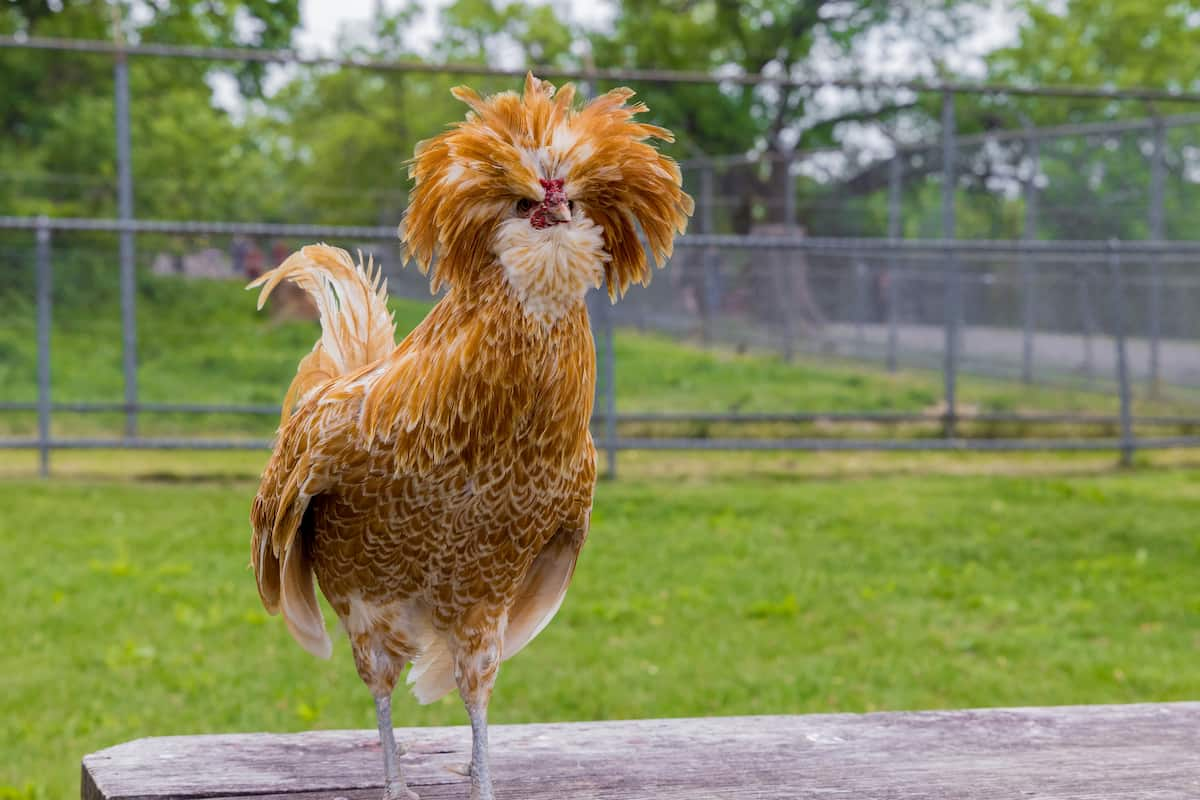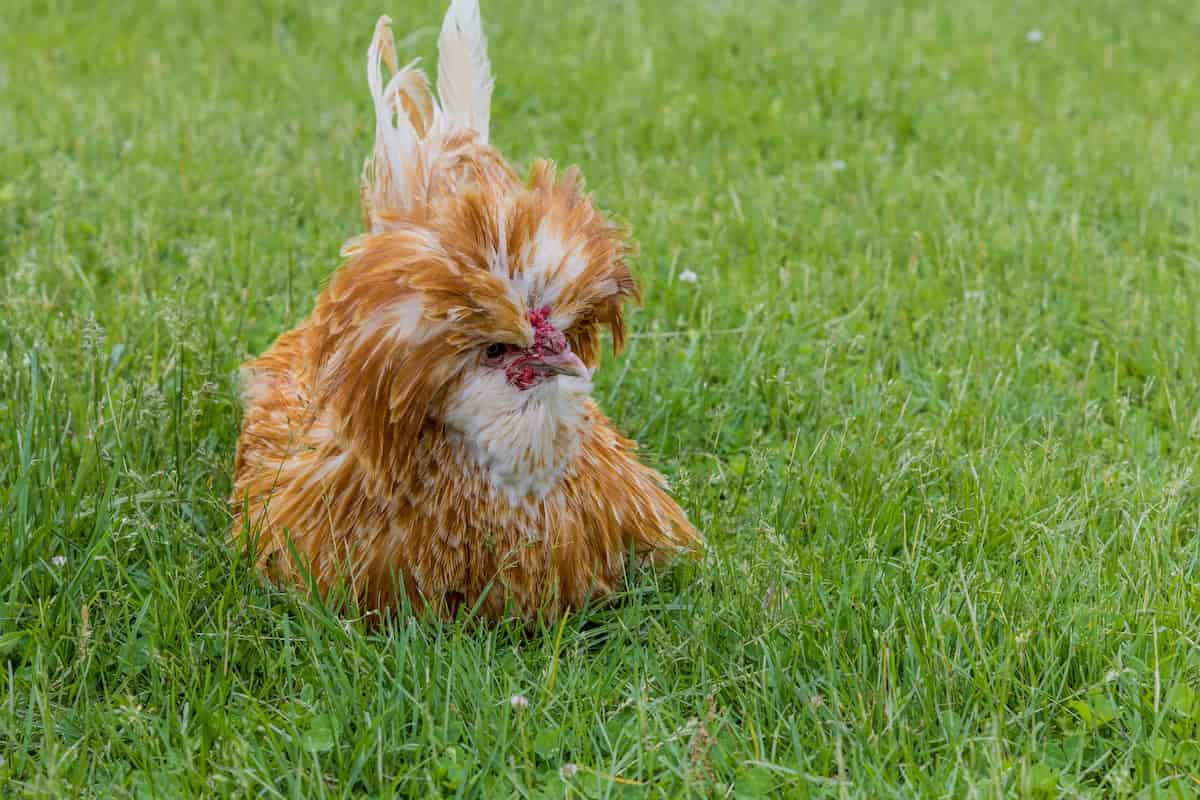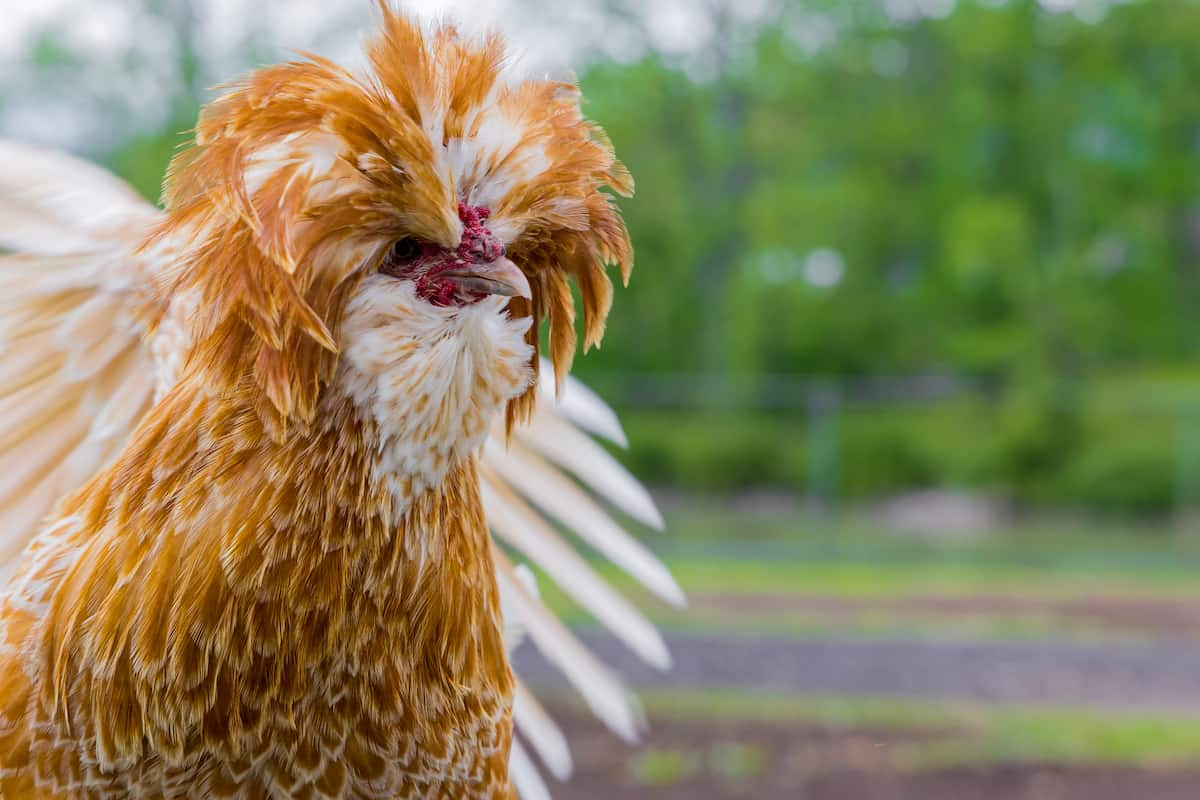The Padovana chicken breed has been around for centuries, originating in the city of Padua, Italy. These birds were primarily kept for their meat and egg-laying abilities but became popular as ornamental birds due to their unique appearance.

Guide to Padovana Chicken Breed
Housing for Padovana Chickens
- The space requirement is important for each bird. These chickens are quite active and love to roam around, so make sure their living space is large enough to move freely.
- Next, provide a coop where they can roost at night and lay eggs during the day. The coop should be well-ventilated with plenty of natural light and offer shade during hot days.
- It would help if you kept their living quarters clean by regularly changing their bedding materials, such as straw or wood shavings. This will help prevent any potential health problems from arising.
- Predator-proofing your chicken coop is another crucial aspect of housing Padovana since they’re vulnerable to attacks from wild animals like foxes or raccoons. So, make sure that your coop has a sturdy fence surrounding it, or even install an electric fence if necessary. You can set up a fenced area outside the coop where they can enjoy the fresh air while protecting themselves from predators.
Padovana Chicken Weight
On average, cocks weigh between 1.8–2.3 kg (4.0–5.1 lb), while hens weigh 1.5–2.0 kg (3.3–4.4 lb). However, remember that weight can vary based on genetics and feeding habits. Padovana chickens are not large birds, making them well-suited for small backyards or urban settings where space is limited. Their light body size also means they require less food than some other breeds of chicken, which can benefit those looking to save money on feed costs.
Feeding Requirement for Padovana Chickens
- These birds are known for having a healthy appetite, and it’s important to ensure that they receive a balanced diet. A good feeding routine should include both commercial feed and fresh greens. Baby chickens will require starter feed with the high protein content necessary for growth.
- You can replace the starter feed with grower or layer pellets as the birds mature. While commercial feeds provide them with all essential nutrients, supplementing your Padovana’s diet with fresh fruits and vegetables increases nutrient absorption and general health.
- You must always have clean water available since these birds drink lots of water throughout the day. Additionally, avoid feeding your chickens table scraps as they may contain harmful additives like salt or sugar that could harm their digestive system or lead to obesity.
- Providing your Padovana flock with appropriate nutrition from good quality feeds supplemented with natural food sources such as leafy greens and fruit & vegetables in moderation, coupled with access to clean water, helps keep them strong and healthy while boosting egg production levels too.
- The feed you give your chickens will determine their growth rate and egg production capacity. You may opt for commercial feeds or make homemade feeds based on grains like corn or wheat combined with protein-rich sources such as soybean meal or fishmeal.
In case you missed it: Ultimate Guide to Kadaknath Chicken Breed: Characteristics, Feed, and Care

Requirements to Raise Padovana Chickens
- They need a spacious, secure coop that protects them from predators and harsh weather conditions. The coop should be well-ventilated and have enough space for each chicken to move around comfortably.
- Padovanas require a balanced diet of grains, pellets, vegetables, fruits, and clean water. It is recommended to feed them twice a day with additional treats occasionally. These chickens thrive in an environment that provides ample opportunities for exercise and socializing.
- Regular health checks are necessary to ensure that your birds stay healthy. This includes regularly checking for signs of disease or parasites and providing appropriate vaccinations.
- Providing constant attention by observing their behavior daily and also paying attention when changes happen rapidly or over time may indicate underlying medical issues requiring veterinary care immediately.
Tips for Raising Padovana Chickens
- Raising Padovana chickens can be an enjoyable and rewarding experience for beginners and seasoned chicken keepers.
- Providing your chickens with a safe and comfortable living space is essential. A coop that is well-ventilated, clean, dry, and spacious enough for your number of birds is crucial. Make sure there is enough nesting space for each hen, too.
- Feeding your Padovanas a balanced diet is vital for their overall health. Please provide them with high-quality commercial feed supplemented with fresh fruits and vegetables, grains, or seeds like wheat or barley in moderation as treats.
- Keep your flock hydrated by providing clean water at all times. Check the water source daily to ensure it’s free from dirt or contaminants that may adversely affect their health.
- Always maintain good hygiene practices when handling your flock, from cleaning up droppings regularly to sanitizing equipment used in caring for them frequently.
Padovana Egg Production
Padovana chickens are beautiful birds to admire and have great layers of eggs. They can lay between 120-150 medium-sized white eggs each year, which is impressive for such a small breed. These hens will start laying as early as five months old and continue consistently throughout the year.
Padovana Chickens Health Care Tips
- Padovana chickens are generally healthy birds but can still be susceptible to various health problems. One common issue is respiratory infections, which can occur due to poor ventilation in the coop. It’s important to ensure the coop has proper airflow and isn’t too crowded.
- Another potential problem is parasites such as mites and lice. Regularly cleaning the coop and nesting boxes and using anti-parasitic solutions can help prevent infestations.
- Proper care includes providing a clean-living environment free from predators and offering regular feedings consisting of high-quality commercial food supplemented with fresh fruits and vegetables.
- Maintaining good hygiene practices in housing areas and keeping up-to-date vaccinations will go a long way towards preventing many common illnesses among Padovana chickens. Accessing plenty of fresh air and sunshine will make them happy.
In case you missed it: Ultimate Guide to Jersey Giant Chicken Breed: Characteristics, Feed, and Care

Conclusion
Raising Padovana chickens requires dedication, but the rewards are plentiful. Padovana chickens are known for their unique and striking appearance. Proper care and feeding are essential to keep your Padovana chickens healthy and happy.
- Ultimate Guide to Ossabaw Island Hog: Breeding, Raising, Diet, and Care
- Ultimate Guide to Juliana Pig: Raising Facts, Size, Diet, Care, and Lifespan
- Raising Lleyn Sheep: Disadvantages, Price, Uses, Characteristics, and Care
- Ultimate Guide to Meishan Pig: Breed Facts, Breeding, Raising, and Care
- Ultimate Guide to Teacup Pigs: Raising, Diet, Lifespan, Cost, and Care
- Guide to Raising Poll Dorset Sheep: Facts, Profile, Characteristics, Uses, and Care
- Ultimate Guide to Bighorn Sheep: Characteristics, Diet, Lifespan, Breeding, and Lifecycle
- Ultimate Guide to Raising Katahdin Sheep: Farming Facts, Breed Profile, Uses, and Care
- Ultimate Guide to Raising Oreo Cows: Belted Galloways Farming Facts, Profile, Uses, and Care